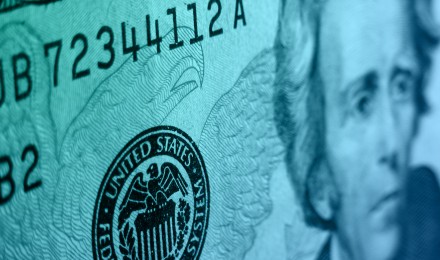As many economists expected, the Federal Reserve announced that it will monitor the economy and give its latest quantitative easing initiative (QE3) time to work. In the FOMC summary, it reports that data show the economy continues to grow at a “moderate pace,” which has been the case for the last few months.
Consumer spending accelerated since the last meeting, and the housing market, relatively speaking, continues to show signs of improvement. The Fed identifies higher energy prices as the reason for slightly higher inflation but remains optimistic that long-term inflation will stay at two percent or lower.
Companies remain cautious when it comes to job creation and business investments have also contracted. The Fed attributes this lack of confidence to three factors:
- Anticipation of tax increases
- Looming spending cuts
- Slow down in worldwide economic growth
These issues persuaded the Fed to make the decision at its September FOMC meeting to initiate a third round of QE3, which consists of purchasing $40 billion a month in mortgage- backed securities (MSB).
QE3 Focused on Keeping Long-term Rates Low
Increasing liquidity in the economy is designed to keep interest rates at historically low levels. In addition, the wealth effect of QE3 stimulates home prices and the stock market. Theoretically, quantitative easing and other initiatives like Operation Twist should provide support to the economy and fuel growth.
The Fed spends $85 billion per month for QE3 and Operation Twist MSB and Treasuries purchases.
Although the economy has show periodically flashes of expansion, it has yet to grow at the rate needed to create jobs or provide a significant boost in the income of Americans. From a confidence standpoint, when consumers feel good about the economy and their personal pocketbooks in particular, the likelihood of them spending more money on goods and services increases.
Before today’s meeting, the Federal Reserve announced its intention to keep interest rates low into 2015, even if the economy expands. This pledge of Fed intervention underlies the effort to ensure that once the economy starts to grow, it can create enough jobs to drive down the unemployment rate.
The Labor Department reports a 7.8% jobless rate for September — the lowest rate since the 2008 presidential election.
The Fed decided to stay the course and assess its current policies before deciding upon further action. Part of the reasoning may be the criticism that the Federal Reserve has received because even with interest rates at all-time lows, the economy has not responded as expected.
Questions about QE3 Effectiveness
Although QE3 received the support of 11 of the 12 Federal Reserve regional bank presidents, some Fed presidents have expressed concern about the lack of effectiveness of the actions.
Since Beginning with the financial crisis in 2008, the Federal Reserve has increased the amount of mortgage bonds and Treasuries purchases threefold by purchasing over $2 trillion in assets. It has investments in the economy totaling $2.85 trillion.
The strategy has proven successful for exerting downward pressure on long-term interest rates. To date, growing the policies decision has not grown the economy at a sustainable pace.
As many economists expected, the Federal Reserve announced that it will monitor the economy and give its latest quantitative easing initiative (QE3) time to work. In the FOMC summary, it reports that data show the economy continues to grow at a “moderate pace,” which has been the case for the last few months.
Consumer spending accelerated since the last meeting, and the housing market, relatively speaking, continues to show signs of improvement. The Fed identifies higher energy prices as the reason for slightly higher inflation but remains optimistic that long-term inflation will stay at two percent or lower.
Companies remain cautious when it comes to job creation and business investments have also contracted. The Fed attributes this lack of confidence to three factors:
- Anticipation of tax increases
- Looming spending cuts
- Slow down in worldwide economic growth
These issues persuaded the Fed to make the decision at its September FOMC meeting to initiate a third round of QE3, which consists of purchasing $40 billion a month in mortgage- backed securities (MSB).
QE3 Focused on Keeping Long-term Rates Low
Increasing liquidity in the economy is designed to keep interest rates at historically low levels. In addition, the wealth effect of QE3 stimulates home prices and the stock market. Theoretically, quantitative easing and other initiatives like Operation Twist should provide support to the economy and fuel growth.
The Fed spends $85 billion per month for QE3 and Operation Twist MSB and Treasuries purchases.
Although the economy has show periodically flashes of expansion, it has yet to grow at the rate needed to create jobs or provide a significant boost in the income of Americans. From a confidence standpoint, when consumers feel good about the economy and their personal pocketbooks in particular, the likelihood of them spending more money on goods and services increases.
Before today’s meeting, the Federal Reserve announced its intention to keep interest rates low into 2015, even if the economy expands. This pledge of Fed intervention underlies the effort to ensure that once the economy starts to grow, it can create enough jobs to drive down the unemployment rate.
The Labor Department reports a 7.8% jobless rate for September — the lowest rate since the 2008 presidential election.
The Fed decided to stay the course and assess its current policies before deciding upon further action. Part of the reasoning may be the criticism that the Federal Reserve has received because even with interest rates at all-time lows, the economy has not responded as expected.
Questions about QE3 Effectiveness
Although QE3 received the support of 11 of the 12 Federal Reserve regional bank presidents, some Fed presidents have expressed concern about the lack of effectiveness of the actions.
Since Beginning with the financial crisis in 2008, the Federal Reserve has increased the amount of mortgage bonds and Treasuries purchases threefold by purchasing over $2 trillion in assets. It has investments in the economy totaling $2.85 trillion.
The strategy has proven successful for exerting downward pressure on long-term interest rates. To date, growing the policies decision has not grown the economy at a sustainable pace.







